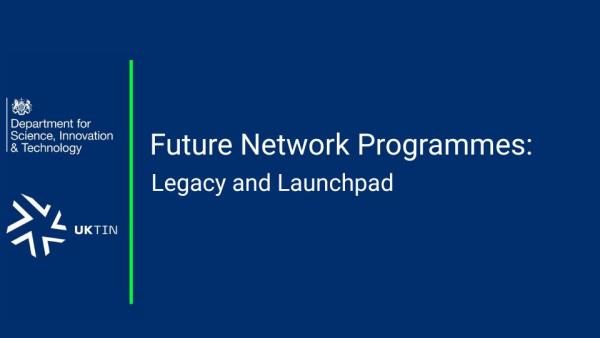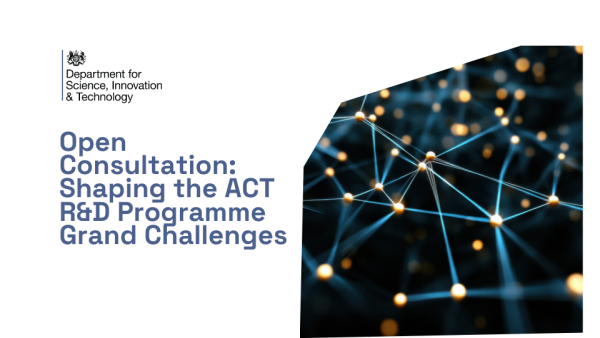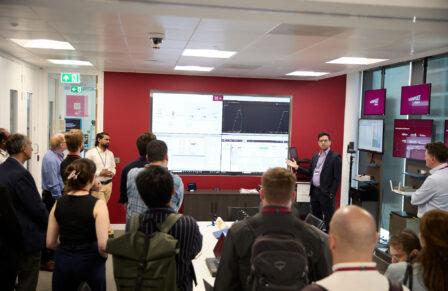
The UKTIN Telecoms R&D&I Future Capability Strategic Leadership (FCSL) Forum was established to consolidate research and innovation in the telecoms industry and create a common vision for UK capabilities over the next five years and beyond.
The UK telecoms sector is highly experienced but fragmented. UKTIN, therefore, aims to bring the ecosystem together and platform the industry’s expert voices. The network’s working groups have collaborated to illustrate the UK’s strengths, priorities, and how the sector can stay competitive in the global market.
The outcome of this work is presented in the UKTIN Future Capabilities Wave Two Report, which is available to read here. Representing a roadmap for telecoms, the paper emphasises the importance of integrating advanced connectivity technologies to achieve national strategic objectives.
What is the FCSL Forum, and who are its members?
The forum is composed of UKTIN’s nine working group chairs, the Academic Leadership Group and a few additional experts. Its members bring a huge depth of experience and expertise, covering everything from AI, quantum, wireless infrastructure, security, spectrum, network management, and optical communications and devices.
FCSL members are united by the belief that the UK has much to offer, but we need a better way of connecting the dots. That is the meaning behind “future capabilities”. It is not about the technology of the future, but investing in the right areas and preparing for the next wave of investment. We need to promote the work of telecoms across industry, academia and the government. The UK already leads many areas of telecommunications research, particularly in academia.
Please explain the process of creating this latest paper.
The paper is the result of over a year’s work. An estimated 130 UKTIN working group members, across industry and academia, offered their input and provided detailed insights.
We asked each of the groups to map out their technology areas, including where the sector is headed over the next ten years internationally, and where the UK stands today. This provided nine separate roadmaps that outline technology priorities.
From there, we looked for connections. We pulled out the overlaps, gaps, and shared priorities, and shaped them into a more unified picture of where the UK telecoms sector could—and should—go next.
Admittedly, it’s not perfect. Unfortunately, we couldn’t cover everything, and some areas need work. But it’s a strong first step. We’ve broken down the silos between technology areas and began to think in terms of systems and integration.
This is our second major publication, and each phase has helped build momentum. It marks the end of the second consultation wave coordinated by UKTIN between July 2024 and May 2025. The group’s first joint analysis identified broad challenges for the UK telecommunication sector as well as specific UK capabilities.
Who should read this paper?
A wide audience, not just technical experts! There’s something here for large companies and start-ups, researchers and engineers, and government stakeholders alike. If you’re in the telecoms sector, work in digital infrastructure, or are involved in shaping UK technology strategy, this is for you. You don’t need to be a specialist in every domain to understand the direction of travel. Telecoms is facing major shifts, and we hope the paper provides the industry with a focus, without being fully prescriptive. The analysis is insightful but accessible.
Why does this work matter?
We need to set priorities and align our efforts towards specific outcomes. When everyone’s doing good work in isolation, the bigger picture can get lost. The roadmap is a first attempt to bring it together and start thinking more strategically across the board.
There is a strong appetite for collaboration. There has been impressive engagement from our experts and DSIT, with an alignment on key themes such as AI, spectrum, cloud-native networks, and open architectures. But why not build on the synergies between stakeholders?
We plan to leverage UKTIN's convening power. The roadmap will need updating. Technology evolves fast, and so must our thinking – continuously, persistently and purposefully.
What is next?
The level of commitment across the ecosystem gives us confidence. We’ve also seen signs of common purpose emerging between academia, industry, and government—exactly the kind of collaboration that’s needed if we’re going to turn these ideas into action.
UKTIN created its FCSL Forum, which fulfils a unique and critical function in the UK ecosystem, and the working group members have gone above and beyond. Most of this work was done voluntarily, driven by a shared belief in the value of building a stronger, more joined-up UK telecoms capability and driving joint public and private investment towards the right digital infrastructure that the UK needs in the AI digital era.
Of course, this is just the beginning. As new technologies emerge and priorities shift, we’ll need to revisit and refresh the roadmap. But we now have a process and framework—and a community to do that work in a more coordinated way.
We encourage anyone with a stake in the future of UK telecoms to read the paper, engage with the findings, and think about how you can contribute. Whether you’re developing next-gen hardware, shaping policy, or building the networks of the future, we’re going to need all hands on deck.
Please reach out to UKTIN Future Capabilities: we need the brilliant people from the UK telecommunication ecosystem to engage in this open, impartial and public activity – and shape the future.









